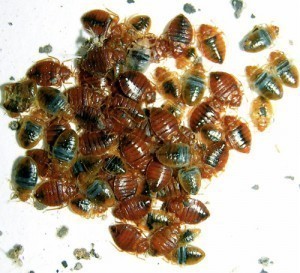How Big are Mites on Cats?
Your pets may be susceptible to a number of small critters that can  wreak havoc on their health and their comfort. Fleas, ticks and mites are the most common infestations found in domestic animals, particularly on cats and dogs.
wreak havoc on their health and their comfort. Fleas, ticks and mites are the most common infestations found in domestic animals, particularly on cats and dogs.
When you pet has been infested by any one of these, it doesn’t mean that they will simply stay on these animals. They can just as easily wreak havoc on you, biting and causing skin irritations; and in worse cases, a number of diseases.
There are likewise several different species for each. There are mites that primarily feed on cats and there are those that primarily feed on humans.
Generally, cat mites are called mange. The most common cat mite is the ear mite.
How Big are Mites on Cats?
An ear mite is so small that you cannot possibly see it with your naked eye. You will need a magnifying lens to be able to see these white, tiny specks walking around your cat’s ears and fur.
These are smaller than the size of a pinhead, approximately less than a millimeter; although they could appear to be a bit bigger than their usual size after feeding.
Another type of cat mite is the harvest mite. While an ear mite does not generally transfer to humans, a harvest mite bites humans. However, it is only the larva of this mite that attacks animals and humans. A larva is only about 0.2 millimeters.
How Do You Know Your Cat Has Been Infested?
Since these are relatively small, you may not be aware of the initial infestation. What you have to watch out for then are the symptoms that follow infestation.
For ear mites, the most common symptom is ear scratching. If you find your cat incessantly scratching his ear, and then behind his ear and other parts of his body; this is an initial indication of ear mite infestation.
Check your cat’s earwax. If it is of brownish color or darker color, appears crusty and has a foul-smelling odor, in all likelihood, your cat has ear mites. However, do not begin treatment until you have secured a proper diagnosis from your veterinarian.
For the harvest mites, the most common symptom is scratching particularly in the underbelly, between the toes and behind the ears. Check if there are red bumps on your cat’s skin or bald patches.
If you see any of these symptoms, take your cat to the vet for further check-up and then proceed to clean your cat and the entire house, including your back and front yard to eliminate the mites.





